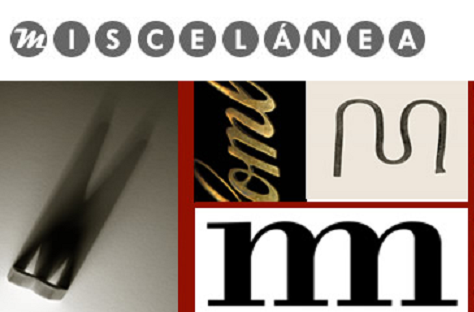Durrell escribiendo sobre escritores escribiendo: Hacia una definición espacial de «El Quinteto de Avignon»
DOI:
https://doi.org/10.26754/ojs_misc/mj.199611045Resumen
El objetivo de este artículo es analizar la influencia recíproca entre Lawrence Durrell y los escritores de ficción que crea en El Quinteto de Avignon . Para explorar esta difuminación de los límites entre ficción y realidad, reflexiono sobre la confluencia de dos fuerzas opuestas que actúan en estas novelas: el Quinteto reconoce a la vez su propia condición de ficción y aumenta gradualmente la sensación de proximidad a una realidad aleatoria e inefable. A lo largo de este trabajo, intentaré también interpretar la forma del quincunce y su desarrollo tridimensional -la pirámide- como la arquitectura narrativa donde estas dos ideas antagónicas se condensan en un único proceso de creación.
Descargas
Citas
ALTER, Robert. 1975. Partial Magic: The Novel as a Self-Conscious Genre. Berkeley: U of California P.
BARNES, Julian. 1978. Review of Monsieur and Livia. New Statesman (September 22): 378.
BORGES, Jorge Luis. 1964. “The Circular Ruins.” In Borges, Labyrinths: Selected Stories and Other Writings. Ed. Donald A. Yates and James E. Irby. New York: New Directions. 45-50.
DURRELL, Lawrence. 1970. A Key to Modern English Poetry. 1952. Norman: U of Oklahoma P.
- - -. 1974. Monsieur: or The Prince of Darkness. London: Faber. Abbreviated as M.
- - -. 1978. Livia: or Buried Alive. London: Faber. Abbreviated as L.
- - -. 1982. Constance: or, Solitary Practices. London: Faber. Abbreviated as C.
- - -. 1983. Sebastian: or, Ruling Passions. London: Faber. Abbreviated as S.
- - -. 1985. Quinx: or, The Ripper’s Tale. London: Faber. Abbreviated as Q.
- - -. 1986. The Alexandria Quartet. 1956. London: Faber.
GASS, William H. 1979. Fiction and the Figures of Life. Boston: Godine.
GIBALDI, Ann. 1991. “Entropy in Lawrence Durrell’s Avignon Quintet: Theme and Structure in Sebastian and Quinx.” Studies in the Literary Imagination 24.1: 101-07.
HAYLES, N. Katherine 1991a. “Introduction: Complex Dynamics in Literature and Science.” In Hayles 1991b: 1-33.
- - -, ed. 1991b. Chaos and Order: Complex Dynamics in Literature and Science. Chicago: U of Chicago P. 1-33
HUTCHEON, Linda. 1984. Narcissistic Narrative: The Metafictional Paradox. 1980. New York: Methuen.
INGERSOLL, Earl G. 1992. “Mise-en-Abyme in The Avignon Quintet.” Paper presented at “On Miracle Ground VII: International Lawrence Durrell Conference,” Avignon, 1-4 July. (Unpublished).
KELLMAN, Steven G. 1980. The Self-Begetting Novel. London: Macmillan.
LORENZ, Paul H. 1990. “Quantum Mechanics and the Shape of Fiction: ‘Non-Locality’ in the Avignon Quincunx.” Paper presented at “On Miracle Ground VI: International Lawrence Durrell Conference, Statesboro. (Unpublished).
MACNIVEN, Ian S. 1987. “The Quincunx Quiddified: Structure in Lawrence Durrell.” The Modernists: Studies in a Literary Phenomenon. Ed. Lawrence B. Gamache and Ian S. MacNiven. Rutherford: Fairleigh Dickinson UP. 234-48.
MANDELBROT, Benoît. 1983. The Fractal Geometry of Nature. 1977. New York: W.H. Freeman.
PACIOLI, Luca. 1987. La Divina Proporción. 1509. Trans. Juan Calatrava. Madrid: Akal.
PLATO. 1971. Ion. In Critical Theory since Plato. Ed. H. Adams. San Diego: Harcourt.
PLO ALASTRUÉ, Ramón. 1991. “The Novelist as Prince of Darkness: A Scientific Approach to Lawrence Durrell’s Monsieur.” In Science, Literature and Interpretation: Essays on Twentieth-century Literature and Critical Theory. Ed. F. Collado. Zaragoza: Secretariado de Publicaciones de la Universidad de Zaragoza. 97-115.
STOICHEFF, Peter. 1991. “The Chaos of Metafiction.” In Hayles 1991b: 85-99.
STONEHILL, Brian. 1988. The Self-Conscious Novel: Artifice in Fiction from Joyce to Pynchon. Philadelphia: U of Pennsylvania P.
VAJDA, S. 1989. Fibonacci & Lucas Numbers, and The Golden Section. Chichester: Ellis Horwood.
WAJSBROT, C. 1986. “Lawrence Durrell: De Cuarteto a Quinteto.” Quimera. 52: 26-8.
WHITE, Eric Charles. 1991. “Negentropy, Noise, and Emancipatory Thought.” In Hayles 1991b: 263-77.
WICKES, George, ed. 1964. Lawrence Durrell and Henry Miller: A Private Correspondence. New York: Dutton.
Descargas
Publicado
Cómo citar
Número
Sección
Licencia
Derechos de autor 1996 Ramón Plo Alastrué

Esta obra está bajo una licencia internacional Creative Commons Atribución-NoComercial 4.0.


